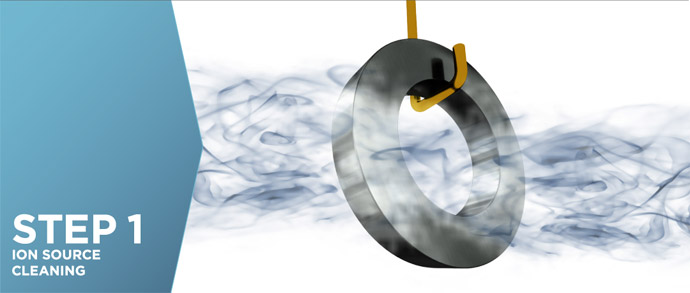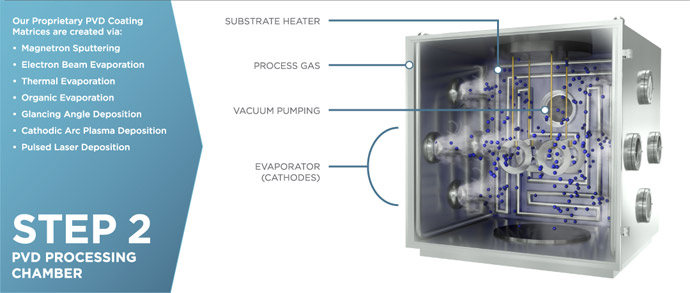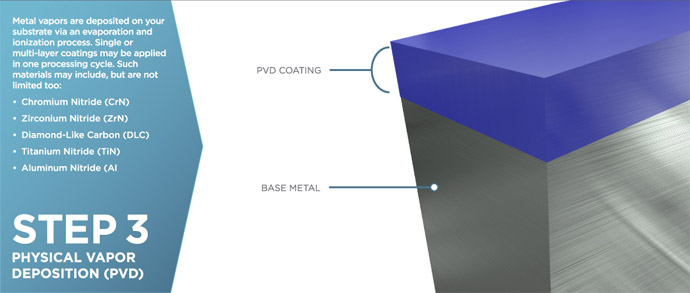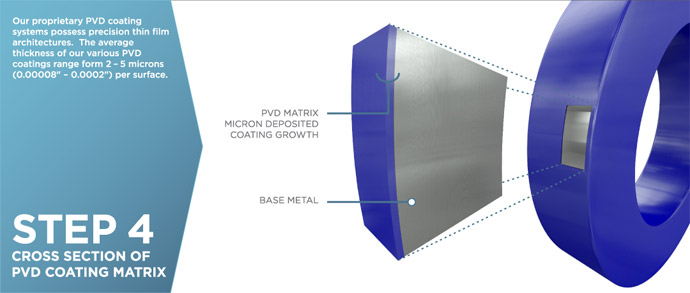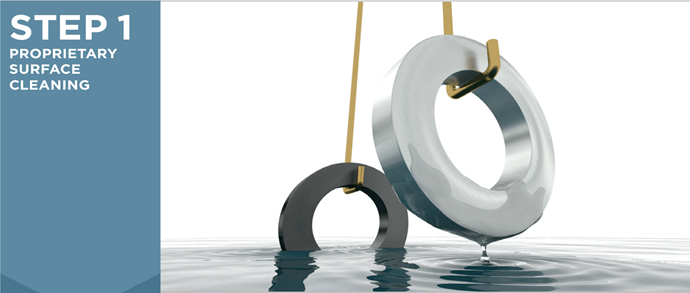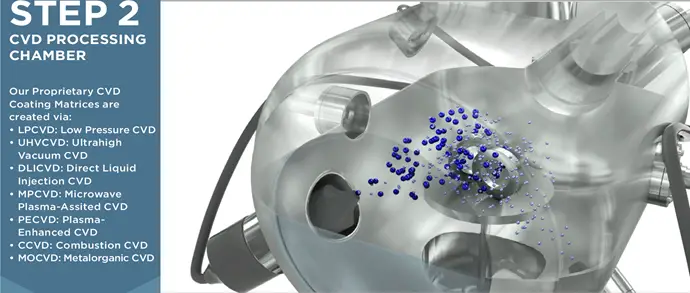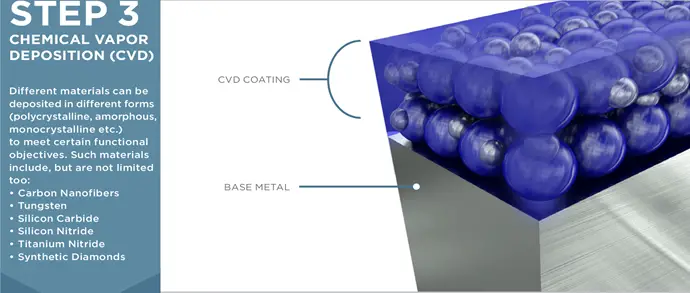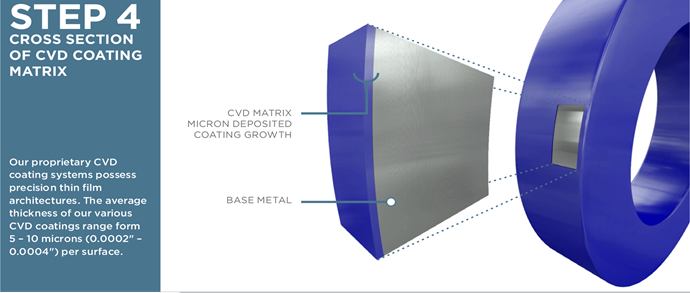PVD & CVD Coatings
Series 600 PVD & CVD Coatings
For Ferrous & Non-Ferrous Metals
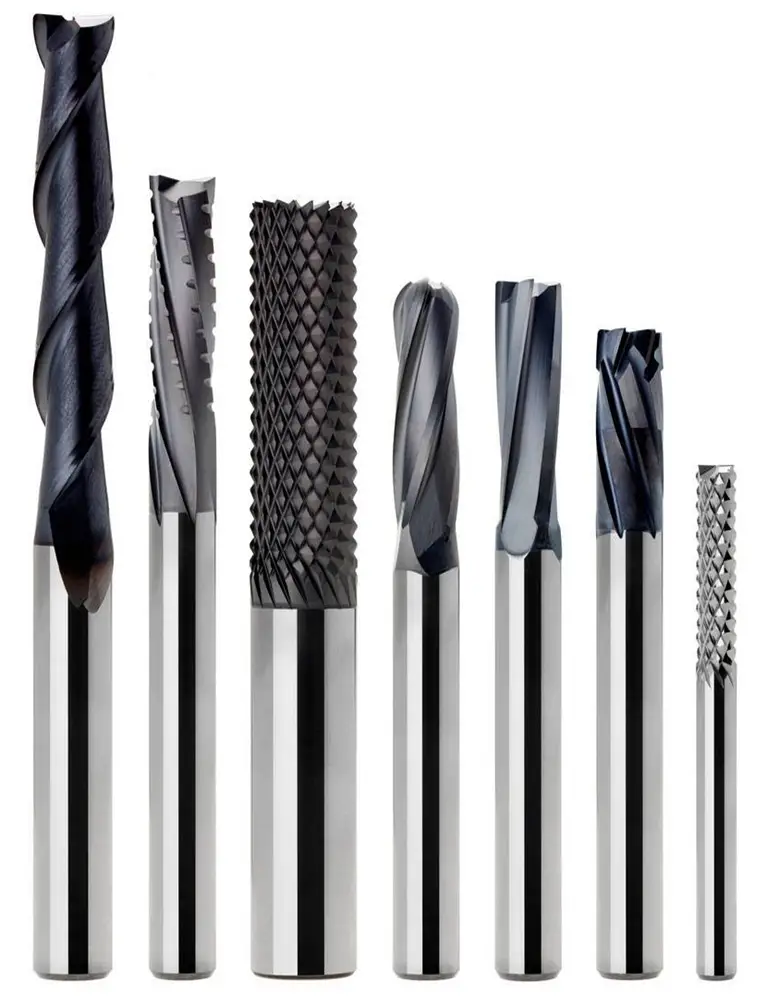
PVD (Physical Vapor Deposition) and CVD (Chemical Vapor Deposition) coatings possess advanced coating architectures which provide a multiplicity of surface characteristics not attainable with standard coating treatments. Special sputtering techniques, low-pressure plasma treatments and specialized equipment enable full coverage of complex, intricate tooling geometries and create a variety of unique material properties.
Primary surface enhancements of pvd coatings and cvd coatings include extraordinary resistance to wear and hardness, and may also include non-wetting, dry lubrication, low friction, corrosion protection, heat transfer, or resistance to thermal oxidation.
Specific coatings are FDA compliant, USDA approved and biocompatible with ISO 10993 and commonly used in industries such as food packaging and food processing.
Series 600 - PVD Coating Process
For Ferrous & Non-Ferrous Metals
Processing Illustrations
At Endura Coatings, we offer the Series 600 PVD / CVD coatings. As part of our pricess we have 4 steps for these coatings.
Step 1: Our ion source cleaning.
Step 2: Our proprietary PVD coating matrices are created via:
- Cathodic Arc Plasma Deposition
- Electron Beam Evaporation
- Glancing Angle Deposition
- Magnetron Sputtering
- Organic Evaporation
- Pulsed Laser Deposition
- Thermal Evaporation
Step 3: Metal vapors aredeposited on your substrate via an evaporation and ionization process. Single or multi-layer coatings may be applied in one processing cycle. Such materials may include, but are not limited to:
- Aluminum Nitride
- Chromium Nitride (CrN)
- Diamond-Like Carbon (DLC)
- Titatnium Nitride (TiN)
- Zirconium Nitride (ZrN)
Step 4: Our proprietary PVD coating systems possess precision thin film architectures. The average thickness of our various PVD coatings range from 2-5 microns (0.00008" - 0.0002") per surface.
Series 600 - CVD Coating Process
For Ferrous & Non-Ferrous Metals
Processing Illustrations
At Endura Coatings, we offer the Series 600 CVD coatings. As part of our pricess we have 4 steps for these coatings.
Step 1: Our proprietary surface cleaning.
Step 2: Our proprietary CVD coating matrices are created via:
- CCVD: Combustion CVD
- DLICVD: Direct Liquid Injection CVD
- LPCVD: Low Pressure CVD
- MOCVD: Metalorganic CVD
- MPCVD: Microwave Plasma-Assisted CVD
- PECVD: Plasma-Enhanced CVD
- UHVCVD: Ultrahigh Vacuum CVD
Step 3: Different materials can be deposited in different forms (polycrystalline, amorphous, monocrystalline etc.) to meet certain functional objectives. Such materials include, but are limited too:
- Carbon Nanofibers
- Titanium Nitride
- Tungsten
- Silicon Carbide
- Silicon Nitride
- Synthetic Diamonds
Step 4: Our proprietary CVD coating systems possess precision thin film architectures. The average thickness of our various CVD coatings range from 4-12 microns (0.0002" - 0.0005") per surface.
Please complete our Coating Requirement Questionnaire
or call us
at 1.800.336.3872 to review & discuss your project requirements.
 Endura Coatings
Endura Coatings